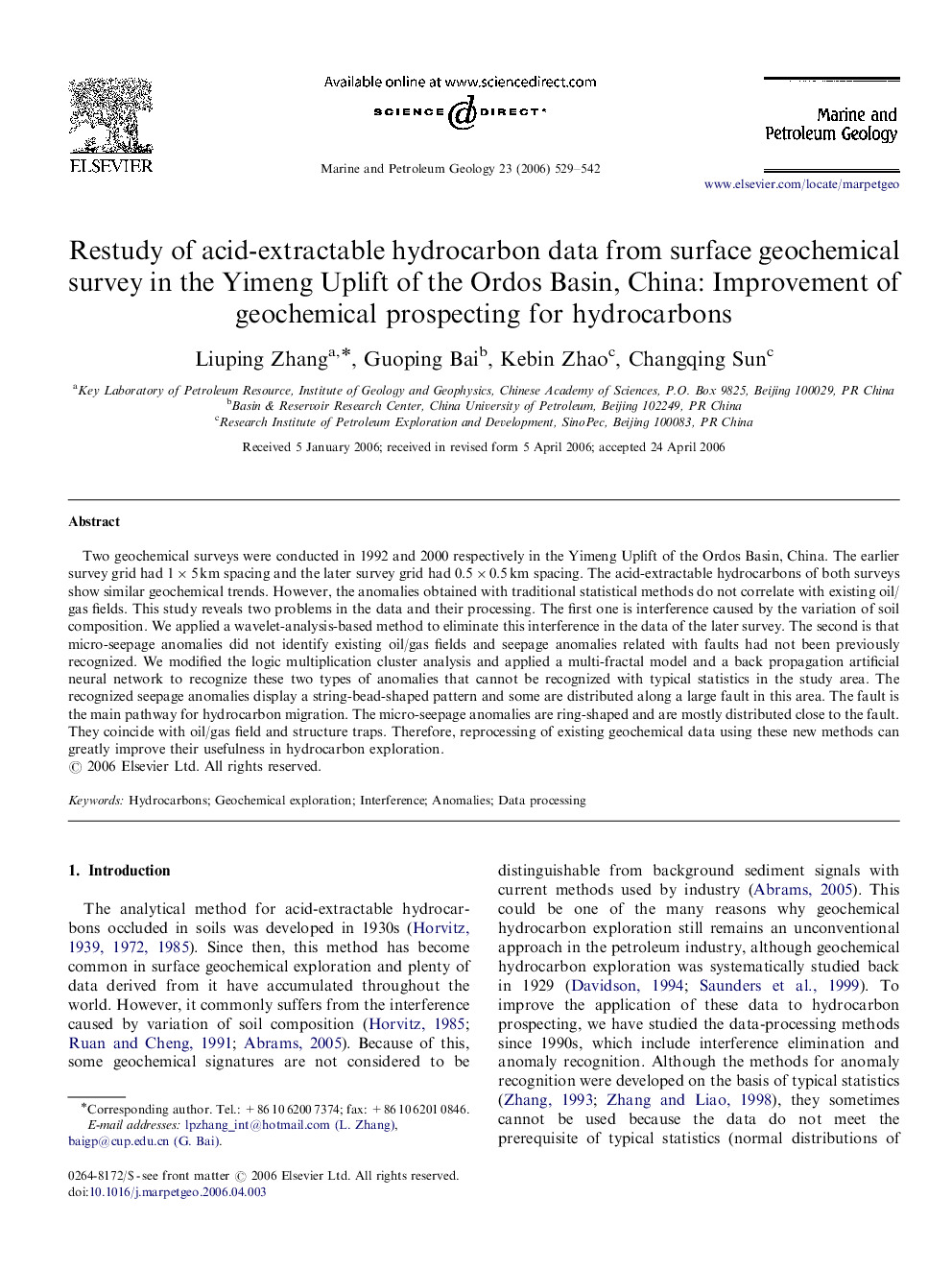| Article ID | Journal | Published Year | Pages | File Type |
|---|---|---|---|---|
| 4696538 | Marine and Petroleum Geology | 2006 | 14 Pages |
Two geochemical surveys were conducted in 1992 and 2000 respectively in the Yimeng Uplift of the Ordos Basin, China. The earlier survey grid had 1×5 km spacing and the later survey grid had 0.5×0.5 km spacing. The acid-extractable hydrocarbons of both surveys show similar geochemical trends. However, the anomalies obtained with traditional statistical methods do not correlate with existing oil/gas fields. This study reveals two problems in the data and their processing. The first one is interference caused by the variation of soil composition. We applied a wavelet-analysis-based method to eliminate this interference in the data of the later survey. The second is that micro-seepage anomalies did not identify existing oil/gas fields and seepage anomalies related with faults had not been previously recognized. We modified the logic multiplication cluster analysis and applied a multi-fractal model and a back propagation artificial neural network to recognize these two types of anomalies that cannot be recognized with typical statistics in the study area. The recognized seepage anomalies display a string-bead-shaped pattern and some are distributed along a large fault in this area. The fault is the main pathway for hydrocarbon migration. The micro-seepage anomalies are ring-shaped and are mostly distributed close to the fault. They coincide with oil/gas field and structure traps. Therefore, reprocessing of existing geochemical data using these new methods can greatly improve their usefulness in hydrocarbon exploration.
